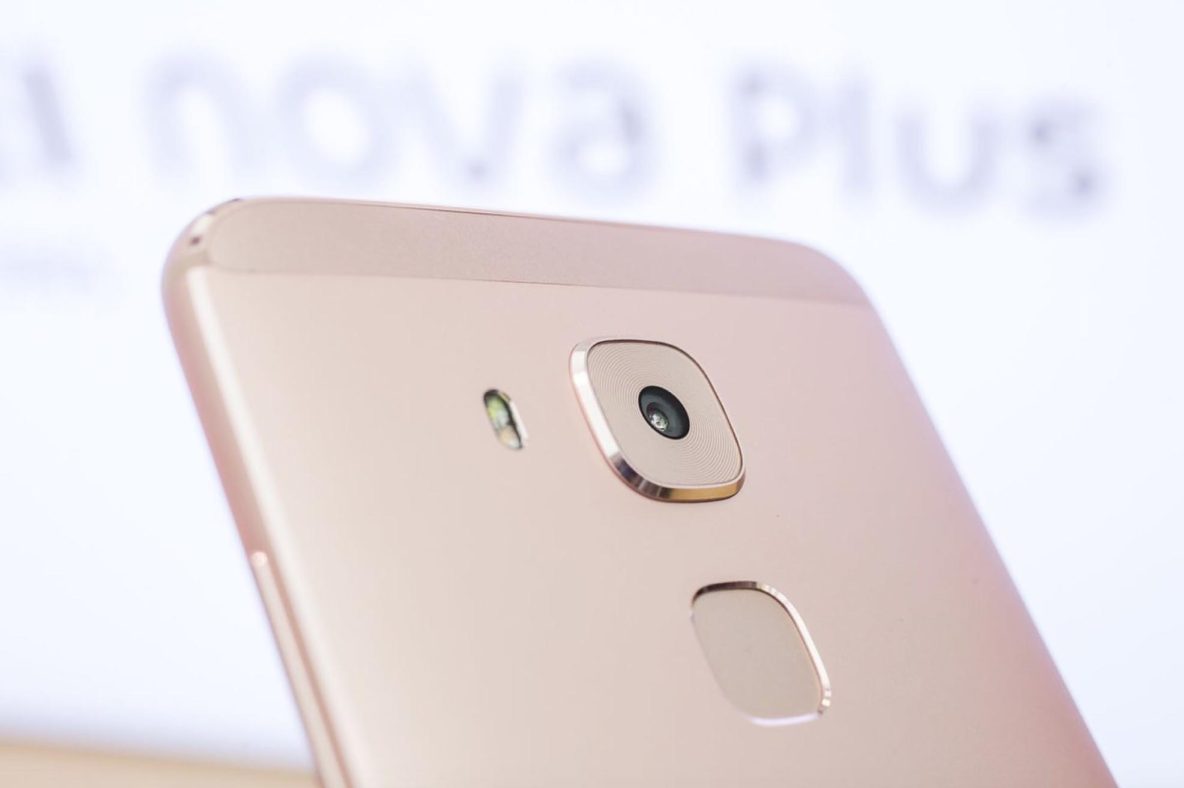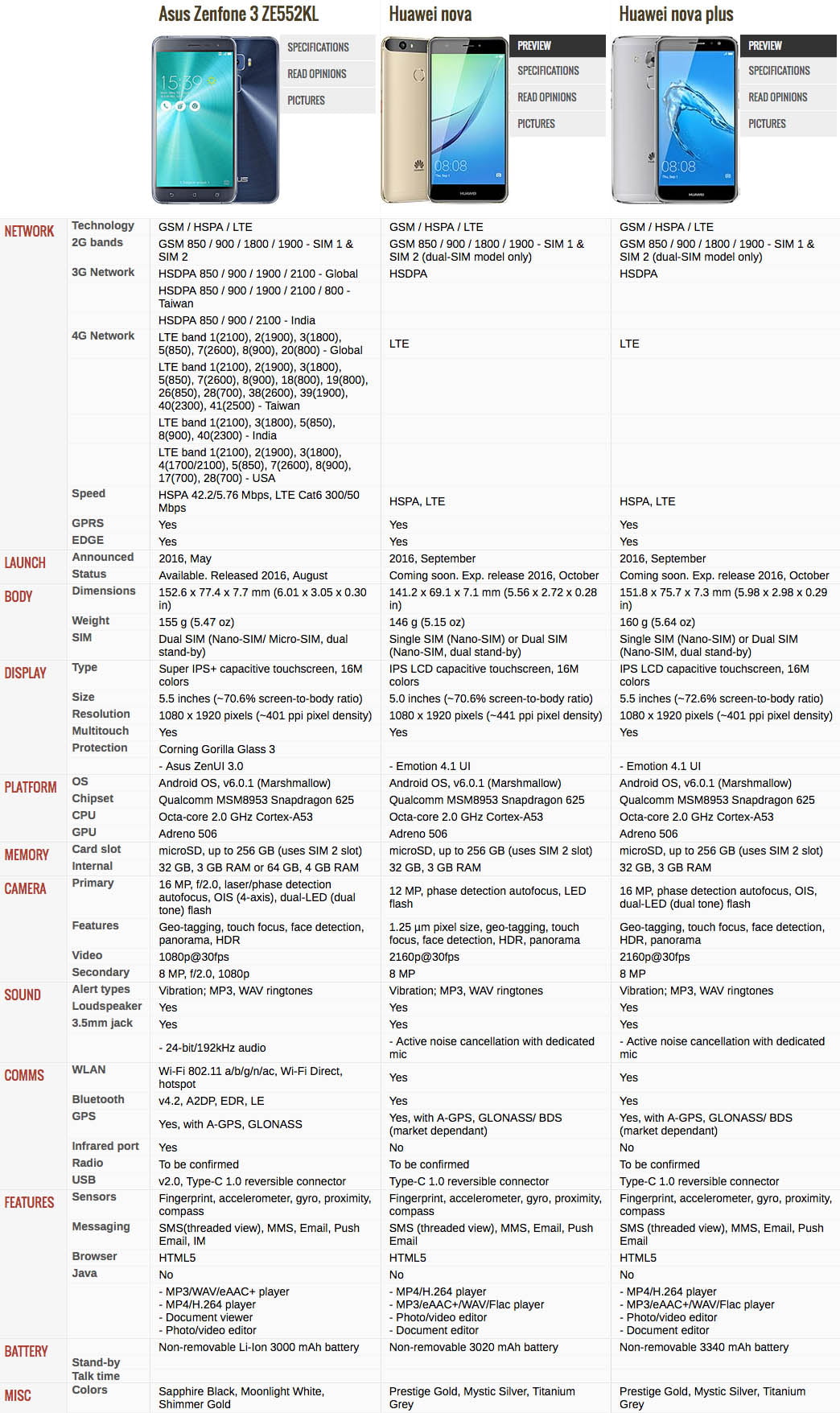If the smaller of the two — pictured below — looks familiar, it’s because the 5-inch Nova has inherited the design DNA of the Huawei-manufactured Google Nexus 6P.
The phone is powered by Qualcomm Snapdragon 625 paired with 3GB of RAM and 32GB of internal storage and features an aluminum body, a fingerprint sensor, a USB Type-C interface, and the same 12-megapixel main camera sensor that Huawei’s flagship mobile, the P9, uses. The IPS screen’s only 1080p, so couple that with the mid-specced processor and you can theoretically stretch the life of the device’s 3,020mAh battery. Huawei claims you can play Pokemon Go with it for five hours straight. With normal usage, the Huawei Nova can supposedly last for 48 hours.
The Nova Plus, despite sporting a different look, is basically a Nova with a bigger, 5.5-inch IPS display; an equally bigger, 3,340mAh battery; and a 16-megapixel rear-facing camera.
This series will slug it out with the ASUS ZenFone 3 in the midrange department. See their similarities in specs in the comparison chart below.
It would be interesting to see which phone will come out on top.
On paper, it looks as though the ASUS ZenFone 3 offers more bang for your money. Remember that its 5.2-inch variant with 4GB of RAM and 64GB of ROM costs P16,995 or around $365 and its 5.5-inch version with the same configuration sells for P18,995 or about $410. The Huawei Nova and Nova Plus with 3GB of RAM and 32GB of internal memory, on the other hand, will command a price of €399 (roughly $445 or P20,000) and €429 (approximately $480 or P22,000), respectively, when they hit stores in October.
However, keep in mind that electronics are usually more expensive in Europe, so these two might be sold for less in Asia, the Philippines included. Sadly, Huawei Philippines told us they’re not sure yet if the smartphones will be released in the country. Guess it’s time to play the waiting game.
My additional take: Is it just me, or is the Huawei Nova look better than its bigger sibling? Specs are not a huge factor when I buy a gadget; the overall user experience and design are up there on my priority list. So if the specs do not differ much, I’d choose the more attractive Nova at any time.
My partner Ramon Lopez’s take: Huawei clearly wants to double down on the midrange segment, but I’m not convinced pricing the Nova and Nova Plus close to the P9 (P23,990 or about $515) and P9 Plus (P29,990 or around $645), two of the better phones the company has built in years, is the right move. It would risk cannibalizing Huawei sales, particularly in markets where choices are plenty and a good percentage of them are excellent. Then again, we’re not even sure the Nova and Nova Plus will ever hit local streets; if they do, let’s hope their price points are more affordable.
Share this Post





